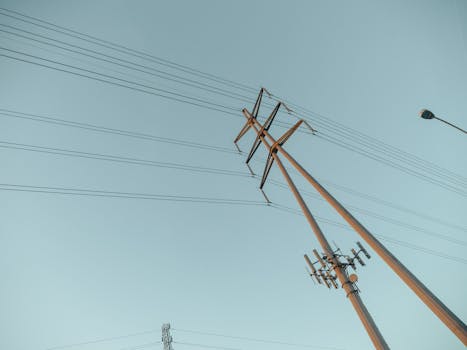“Illuminate Your Journey: Master Solar Wiring with Easy Step-by-Step Instructions!”
Solar wiring for beginners involves understanding the essential components and connections required to set up a solar power system. This guide provides step-by-step instructions to help newcomers navigate the process of wiring solar panels, charge controllers, batteries, and inverters. By breaking down each stage, from selecting the right materials to ensuring safe and efficient connections, this introduction aims to empower individuals to harness solar energy effectively. Whether for a small off-grid system or a larger installation, mastering solar wiring is crucial for optimizing energy production and ensuring system reliability.
Understanding Solar Wiring Basics
Understanding the basics of solar wiring is essential for anyone looking to harness the power of the sun for energy. At its core, solar wiring involves connecting various components of a solar power system, including solar panels, charge controllers, batteries, and inverters. Each of these components plays a crucial role in ensuring that the system operates efficiently and safely. To begin with, it is important to familiarize yourself with the fundamental concepts of electricity, such as voltage, current, and resistance, as these principles will guide you in making informed decisions throughout the installation process.
When setting up a solar power system, the first component to consider is the solar panel. Solar panels convert sunlight into direct current (DC) electricity, which is then used to charge batteries or power electrical devices. Understanding the specifications of your solar panels, including their voltage and wattage ratings, is vital. This information will help you determine how many panels you need to meet your energy requirements. Once you have selected your solar panels, the next step is to connect them in series or parallel configurations, depending on your system’s voltage requirements. Connecting panels in series increases the voltage, while connecting them in parallel increases the current.
After establishing the solar panel configuration, the next component to integrate is the charge controller. The charge controller regulates the voltage and current coming from the solar panels to the batteries, preventing overcharging and ensuring optimal battery health. It is essential to choose a charge controller that matches the voltage of your solar panel system. For instance, if you are using a 12-volt battery system, a 12-volt charge controller is necessary. When wiring the charge controller, it is crucial to connect the solar panel leads to the input terminals and the battery leads to the output terminals, following the manufacturer’s instructions carefully.
Once the charge controller is in place, the next step involves connecting the batteries. Batteries store the energy generated by the solar panels for use when sunlight is not available. When selecting batteries, consider their capacity, which is measured in amp-hours (Ah). This capacity will determine how long your system can run without sunlight. When wiring batteries, it is important to connect them in series or parallel, depending on your desired voltage and capacity. For example, connecting two 12-volt batteries in series will create a 24-volt system, while connecting them in parallel will maintain a 12-volt system but double the capacity.
Following the battery installation, the final component to integrate is the inverter. The inverter converts the DC electricity stored in the batteries into alternating current (AC) electricity, which is used by most household appliances. When selecting an inverter, ensure that it can handle the total wattage of the devices you plan to power. Wiring the inverter involves connecting it to the battery terminals and ensuring that the output is directed to your electrical panel or directly to the appliances.
Throughout the wiring process, safety should always be a priority. Use appropriate gauge wires to handle the current load, and ensure all connections are secure to prevent overheating or short circuits. Additionally, consider incorporating fuses or circuit breakers to protect your system from overloads. By understanding these solar wiring basics and following a systematic approach, you can successfully set up a solar power system that meets your energy needs while contributing to a more sustainable future. With careful planning and execution, you will be well on your way to enjoying the benefits of solar energy.
Essential Tools for Solar Wiring
When embarking on a solar wiring project, having the right tools is crucial for ensuring both safety and efficiency. The first essential tool you will need is a multimeter. This device is invaluable for measuring voltage, current, and resistance, allowing you to troubleshoot and verify that your solar system is functioning correctly. By using a multimeter, you can ensure that your connections are secure and that the system is operating within the expected parameters.
Next, wire strippers are indispensable for preparing your solar wires. These tools allow you to remove the insulation from the ends of the wires without damaging the copper strands inside. Properly stripped wires are essential for making secure connections, which in turn helps to prevent energy loss and potential hazards. Additionally, having a good pair of wire cutters on hand will enable you to cut wires to the desired length, ensuring that your installation is neat and organized.
In conjunction with wire strippers and cutters, a crimping tool is necessary for creating reliable connections between wires and terminals. Crimping tools compress metal connectors onto the wire ends, providing a strong and durable bond. This is particularly important in solar installations, where vibrations and environmental factors can lead to loose connections over time. By using a crimping tool, you can enhance the longevity and reliability of your solar wiring.
Furthermore, a soldering iron can be beneficial for those who prefer a more permanent connection method. Soldering involves melting a filler metal to join two wires together, creating a solid electrical connection. While this method requires a bit more skill and practice, it can result in a very reliable connection when done correctly. If you choose to solder, ensure you have soldering wire and a sponge for cleaning the iron tip, as well as safety goggles to protect your eyes from any potential splashes of molten solder.
In addition to these tools, having a good selection of connectors and terminals is essential. These components facilitate the joining of wires and ensure that your solar system operates efficiently. Common types of connectors include MC4 connectors, which are widely used in solar applications due to their weatherproof design and ease of use. Having a variety of connectors on hand will allow you to adapt to different wiring scenarios as your project progresses.
Moreover, a drill and drill bits are often necessary for mounting solar panels and securing wiring. When installing solar panels on a roof or other surfaces, you may need to create holes for screws or anchors. A power drill can make this task much easier and more efficient. Additionally, having a level on hand will help ensure that your solar panels are installed at the correct angle for optimal sunlight exposure.
Lastly, personal protective equipment (PPE) should not be overlooked. Safety goggles, gloves, and a hard hat are essential for protecting yourself while working on your solar wiring project. Electrical work can pose risks, and taking precautions will help mitigate potential hazards.
In conclusion, equipping yourself with the right tools is fundamental to successfully wiring a solar system. From multimeters and wire strippers to crimping tools and connectors, each tool plays a vital role in ensuring that your installation is safe, efficient, and reliable. By investing in quality tools and taking the time to learn how to use them properly, you will set the foundation for a successful solar wiring project that can provide clean energy for years to come.
Step-by-Step Guide to Wiring Solar Panels
Wiring solar panels can seem daunting for beginners, but with a clear understanding of the process and some careful planning, it can be a manageable task. To begin, it is essential to gather all necessary materials and tools. You will need solar panels, a charge controller, batteries, wiring, connectors, and safety equipment such as gloves and goggles. Having everything on hand will streamline the process and minimize interruptions.
Once you have your materials ready, the first step is to determine the layout of your solar panel system. This involves deciding where the panels will be installed, whether on a roof or on the ground, and ensuring they are positioned to receive maximum sunlight exposure. After establishing the location, you can start by mounting the solar panels securely. It is crucial to follow the manufacturer’s instructions for mounting to ensure stability and safety.
After the panels are mounted, the next step is to connect them in series or parallel, depending on your system’s voltage requirements. Connecting in series increases the voltage, while connecting in parallel increases the current. For most residential systems, connecting panels in series is common, as it allows for higher voltage, which can reduce losses over long distances. Use appropriate connectors to join the panels, ensuring that the positive terminal of one panel connects to the negative terminal of the next. This step is vital for maintaining the correct flow of electricity.
Once the panels are connected, the next phase involves wiring them to the charge controller. The charge controller is a critical component that regulates the voltage and current coming from the solar panels to the batteries, preventing overcharging and ensuring optimal battery life. Begin by running the wires from the solar panels to the charge controller. It is advisable to use appropriately gauged wire to handle the current without overheating. Connect the positive wire from the solar panels to the positive terminal on the charge controller and the negative wire to the negative terminal. This connection is crucial for the system to function correctly.
Following the connection to the charge controller, the next step is to wire the batteries. Batteries store the energy generated by the solar panels for use when sunlight is not available. Connect the charge controller to the batteries by running wires from the charge controller’s battery terminals to the corresponding terminals on the batteries. Again, ensure that you connect the positive to positive and negative to negative. If you are using multiple batteries, they can be wired in series or parallel, depending on your desired voltage and capacity.
After the batteries are connected, the final step is to wire the inverter, which converts the stored DC power from the batteries into AC power for household use. Connect the inverter to the batteries, ensuring that the connections are secure and correctly polarized. Once everything is connected, double-check all connections for tightness and correctness to prevent any potential issues.
Finally, it is essential to test the system to ensure everything is functioning as intended. Monitor the charge controller to verify that it is receiving power from the solar panels and that the batteries are charging correctly. By following these step-by-step instructions, beginners can successfully wire a solar panel system, paving the way for a sustainable energy solution that can significantly reduce electricity costs and environmental impact. With patience and attention to detail, anyone can embark on this rewarding journey into solar energy.
Common Mistakes to Avoid in Solar Wiring
When embarking on a solar wiring project, beginners often encounter a variety of challenges that can lead to costly mistakes. Understanding these common pitfalls is essential for ensuring a successful installation and maximizing the efficiency of your solar energy system. One of the most frequent errors is improper wire sizing. Many newcomers underestimate the importance of selecting the correct gauge of wire, which can lead to overheating and energy loss. It is crucial to consult the National Electrical Code (NEC) guidelines and consider factors such as the distance between components and the total current load to determine the appropriate wire size.
Another common mistake is neglecting to account for voltage drop. As electricity travels through wires, it experiences a reduction in voltage, which can significantly impact the performance of your solar system. To mitigate this issue, it is advisable to keep wire runs as short as possible and to use thicker wires for longer distances. Additionally, beginners often overlook the importance of using high-quality connectors and junction boxes. Cheap or incompatible connectors can lead to corrosion and poor connections, ultimately reducing the efficiency of the system. Investing in reliable components will pay off in the long run by ensuring a stable and efficient energy flow.
Moreover, many novices fail to properly plan their layout before beginning the installation. A well-thought-out design not only simplifies the wiring process but also enhances the overall performance of the solar system. It is essential to map out the placement of solar panels, inverters, and batteries, taking into consideration factors such as sunlight exposure and accessibility for maintenance. This planning phase should also include a thorough understanding of the electrical flow within the system, as this knowledge will guide you in making informed decisions throughout the installation.
In addition to layout planning, beginners often underestimate the importance of grounding their solar systems. Proper grounding is vital for safety and can prevent damage from lightning strikes or electrical surges. Failing to ground your system correctly can lead to hazardous situations, including electrical fires. Therefore, it is imperative to follow grounding guidelines and ensure that all components are securely connected to a grounding system.
Furthermore, many first-time installers neglect to read the manufacturer’s instructions for each component. Each solar panel, inverter, and battery may have specific requirements that must be adhered to for optimal performance. Skipping this step can result in improper installation and may void warranties. Therefore, taking the time to familiarize yourself with the documentation provided by manufacturers is a crucial step in the process.
Lastly, one of the most significant mistakes beginners make is rushing through the installation. While it may be tempting to complete the project quickly, taking the time to double-check connections, verify measurements, and ensure compliance with local codes is essential. Rushing can lead to oversights that may compromise the safety and efficiency of the system. By approaching the installation methodically and patiently, you can avoid many of the common pitfalls that plague novice solar installers.
In conclusion, by being aware of these common mistakes and taking proactive steps to avoid them, beginners can set themselves up for success in their solar wiring projects. From selecting the right wire gauge to ensuring proper grounding and following manufacturer instructions, each aspect plays a vital role in creating a safe and efficient solar energy system. With careful planning and attention to detail, you can harness the power of the sun effectively and enjoy the benefits of renewable energy for years to come.
Q&A
1. **Question:** What is the first step in solar wiring for beginners?
**Answer:** The first step is to gather all necessary materials, including solar panels, charge controller, batteries, inverter, and wiring tools.
2. **Question:** How do you connect solar panels to the charge controller?
**Answer:** Connect the positive (+) terminal of the solar panel to the positive (+) terminal of the charge controller and the negative (-) terminal of the solar panel to the negative (-) terminal of the charge controller.
3. **Question:** What is the next step after connecting the solar panels to the charge controller?
**Answer:** After connecting the solar panels, connect the charge controller to the battery by connecting the positive (+) terminal of the charge controller to the positive (+) terminal of the battery and the negative (-) terminal of the charge controller to the negative (-) terminal of the battery.
4. **Question:** How do you connect the inverter to the battery?
**Answer:** Connect the positive (+) terminal of the inverter to the positive (+) terminal of the battery and the negative (-) terminal of the inverter to the negative (-) terminal of the battery.
Conclusion
In conclusion, solar wiring for beginners involves understanding the basic components of a solar power system, including solar panels, charge controllers, batteries, and inverters. By following step-by-step instructions, beginners can safely and effectively connect these components, ensuring proper functionality and efficiency. It is essential to prioritize safety, adhere to local codes, and consult professional resources when necessary to achieve a successful solar installation.




